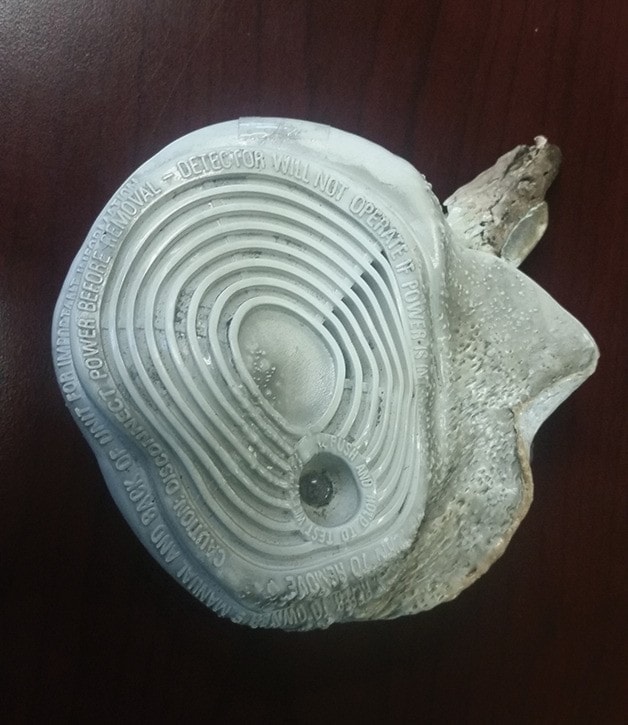Smoke alarms save lives – there’s no arguing that – but their importance is now more critical than ever.
 “They have made a difference … we’ve had a few fires in Langford where if it weren’t for the smoke alarm, the residents would have been trapped,” said Langford Fire Rescue Assistant Chief Chris Aubrey.
“They have made a difference … we’ve had a few fires in Langford where if it weren’t for the smoke alarm, the residents would have been trapped,” said Langford Fire Rescue Assistant Chief Chris Aubrey.
One instance in particular stands out in his mind. It was a half dozen or so years ago and saw a fire crew respond to a call at a residence where a woman lived on her own and had a few medical complications to contend with. “She woke up and her whole room was smoky. It was so smoky she couldn’t find the door,” Aubrey said.
The woman called 911 but couldn’t find her way out of the home.
A neighbour heard the alarm and opened the door. Disoriented, the woman was heading towards the fire when the neighbour pulled her from the building.
Details from the call remain fresh for Aubrey, like the end condition of the smoke alarm that saved the woman’s life.
 Only the little metal connection and the battery survived the fire. “There was no plastic left … It was completely destroyed,” he said.
Only the little metal connection and the battery survived the fire. “There was no plastic left … It was completely destroyed,” he said.
After a recent series of calls about malfunctioning detectors, Langford Fire Rescue is reminding people to make sure their smoke alarms and carbon monoxide sensors are in proper working order.
A significant number of those calls have come from residents whose alarms were going off when there was no smoke in the home. In many cases, Aubrey noted, further inspection found the detectors to be well over 10 years old and in need of replacement.
“It’s been a bit of an unusual stretch,” he said. “I don’t know what it is about smoke alarms, but they usually start to fail or beep at 4 a.m.”
These devices have a shelf life. The department recommends replacement for smoke alarms after 10 years and seven for carbon monoxide detectors.
Aubrey added that the best way to make sure your detectors are in working order is to test them once a month.
While many think they’ll have plenty of time to get out of their home once a fire starts, every second is starting to count.
“Modern furniture burns so much hotter and faster,” Aubrey said, pointing to the increased use of plastics, foam and other synthetic materials. Newer construction can leave residents just minutes to escape, he added. While a typical room back in the 1970s or ’80s may have taken roughly 17 minutes to become fully engulfed, it only takes three to four minutes for flashover – the point when every item in a room is on fire – to occur in new builds.
“It’s shocking to think about … The importance of smoke alarms and carbon monoxide detectors is so much more now than it was in the ’80s.”
For more information or safety tips about sensors, contact Langford Fire Rescue at 250-478-7770.
katie@goldstreamgazette.com
